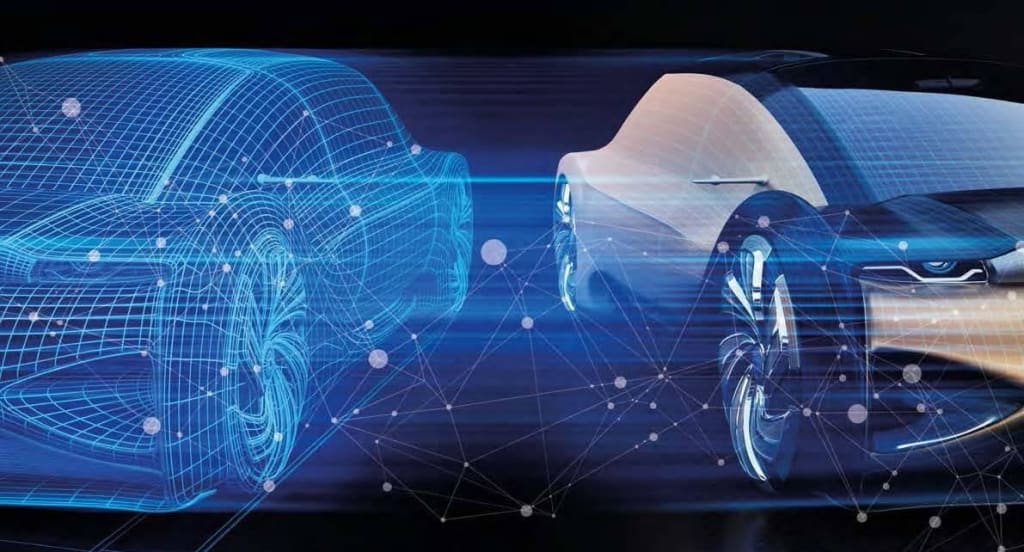Unraveling the Potential of Digital Twin: A Bridge to Real-World Synergy
Digital Twin

In the ever-evolving landscape of technology, the concept of Digital Twin has emerged as a transformative force. A Digital Twin is a virtual representation of a physical entity or system, mirroring its characteristics, behaviors, and interactions in real-time. Originally conceived for industrial applications, Digital Twin technology has now permeated various sectors, including manufacturing, healthcare, transportation, and urban planning. This essay delves into the potential of Digital Twin as a bridge to real-world synergy, exploring its benefits, challenges, and future implications.
The Foundation of Digital Twin Technology
The foundation of Digital Twin lies in the convergence of cutting-edge technologies. IoT (Internet of Things) sensors and devices gather data from the physical entity, while advanced analytics, artificial intelligence, and machine learning algorithms process and model this data in real-time. The result is a digital replica that can mimic the behavior and changes of its physical counterpart, allowing for insights and predictions that were previously unattainable.
Transforming Industrial Processes
The industrial sector has witnessed a profound impact from the adoption of Digital Twin technology. Manufacturers can create virtual representations of their production lines, optimizing operations and identifying bottlenecks without disrupting the actual workflow. Predictive maintenance has become a reality, as Digital Twins monitor equipment health and performance, reducing downtime and operational costs. Moreover, the concept of a product's Digital Twin enables improved product development, allowing designers to simulate and test their creations before physically manufacturing them.
Advancing Healthcare and Personalized Medicine
Digital Twin technology has found applications in the healthcare sector, particularly in the domain of personalized medicine. By integrating patient data, including genetic information, lifestyle habits, and medical history, physicians can create Digital Twins of individual patients. These virtual replicas help in predicting disease progression, identifying suitable treatments, and customizing healthcare plans, leading to more precise and effective medical interventions.
Enhancing Urban Planning and Sustainability
In the context of urban planning, Digital Twins enable cities to model and simulate different scenarios to optimize resource allocation, energy consumption, and transportation systems. This technology allows city planners to visualize the potential impacts of new developments, infrastructure changes, and population growth, leading to more sustainable and efficient urban environments. Real-time monitoring through Digital Twins also helps in responding promptly to emergencies and environmental challenges like pollution and natural disasters.
Challenges and Ethical Considerations
Despite its transformative potential, Digital Twin technology faces several challenges. The accuracy and reliability of the virtual representation depend on the quality of data gathered from the physical entity, which can be challenging to obtain in certain situations. Additionally, ensuring data privacy and security is paramount, as sensitive information becomes integral to the Digital Twin's functioning. The ethical use of Digital Twins in various sectors also raises concerns about data ownership, potential biases, and unintended consequences.
Future Implications and Opportunities
The future of Digital Twin technology is promising, with several opportunities on the horizon. As advancements continue in sensor technology, data analytics, and AI, Digital Twins will become even more accurate, responsive, and intelligent. Interconnectivity between multiple Digital Twins could lead to a broader ecosystem of digital representations, fostering collaboration and information exchange across various domains. In the long term, the integration of Digital Twins with augmented reality and virtual reality could enable immersive and interactive experiences, further bridging the gap between the digital and physical worlds.
Digital Twin technology has emerged as a powerful tool with the potential to transform industries and enhance the quality of life for individuals. Its applications span from optimizing industrial processes and healthcare treatments to revolutionizing urban planning and sustainability. However, addressing the challenges of data quality, privacy, and ethical considerations is vital to ensuring its responsible and sustainable deployment. As we venture into the future, Digital Twin technology will continue to evolve, bridging the gap between the digital and physical realms, and fostering real-world synergy in diverse sectors. Embracing this transformative technology with a conscientious approach can lead us to a more connected and efficient world.
About the Creator
Reynol Brennan
A small blogger who shares emotions, life, life insights, and short stories, and provides everyone with happiness, growth, and common sense of life.






Comments
There are no comments for this story
Be the first to respond and start the conversation.